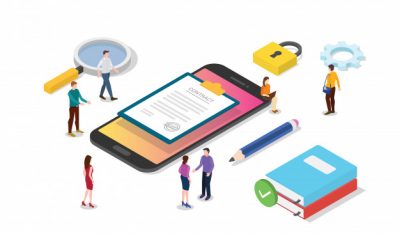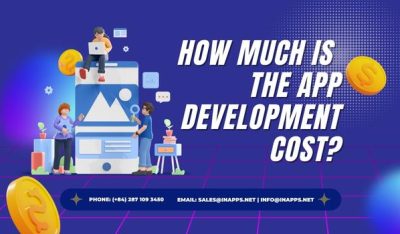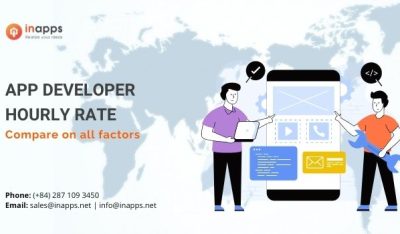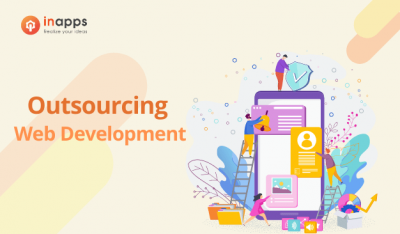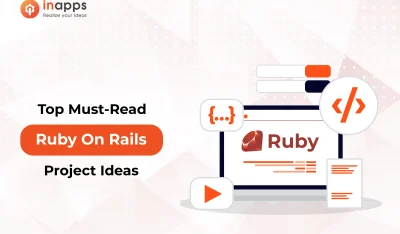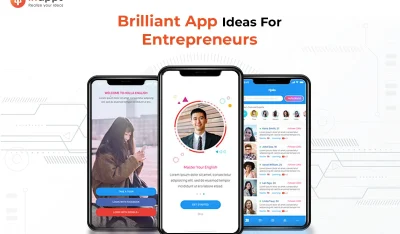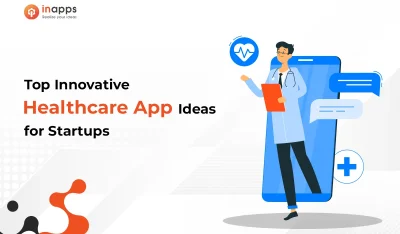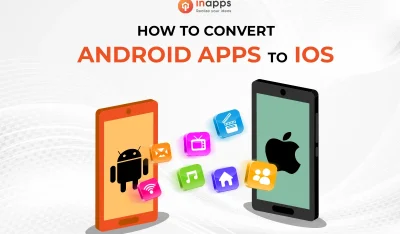- Home
- >
- Mobile apps development
- >
- How to be successful with your first Custom App Development
Every business today understands the potential of the custom app and how successfully it can growth hack their business. Custom mobile app development can be partially or fully personalized to suit your business needs. Therefore, you can bring your app idea to life exactly like when you have it in thought.
This article will unfold from A to Z about custom mobile application development and explain how to make a custom app successfully to bring your app idea to life.
Let’s get started!
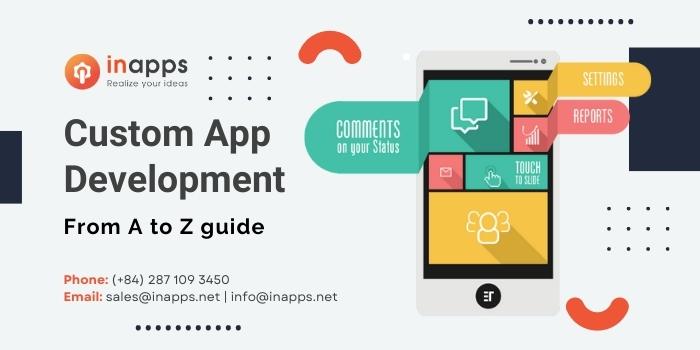
How to make a custom app
What is Custom App Development?
Customized mobile application development necessitates a high level of adaptability to the customer’s needs. An application released after development is frequently one-of-a-kind because it contains specific features requested by the client company.
A custom app can be created for external users (e-commerce, games, and educational), but it is most commonly used by internal users (customer management, production monitoring, time tracking). Rather than standard software solutions, custom development solutions frequently address specific needs through tailored features.
Custom Web App Development
Custom web app development focuses on creating applications that users can access via web browsers from their computers, phones, tablets, and other devices. The primary benefit and feature of custom web application development are that the client can ensure that their solution is accessible and responsive on screens of all sizes and in all browsers.
Custom Mobile App Development?
Custom mobile application development is similar to web services in that it focuses on providing the best options for existing operating systems and mobile devices. A tailored mobile solution must ensure:
- It is available on the most popular mobile phone, tablet, and wearable device models.
- It can be adjusted to fit any screen size.
- Compatible with the most current operating systems.
- Adapt to future operating systems, screen sizes, and models (for example, foldable smartphones).
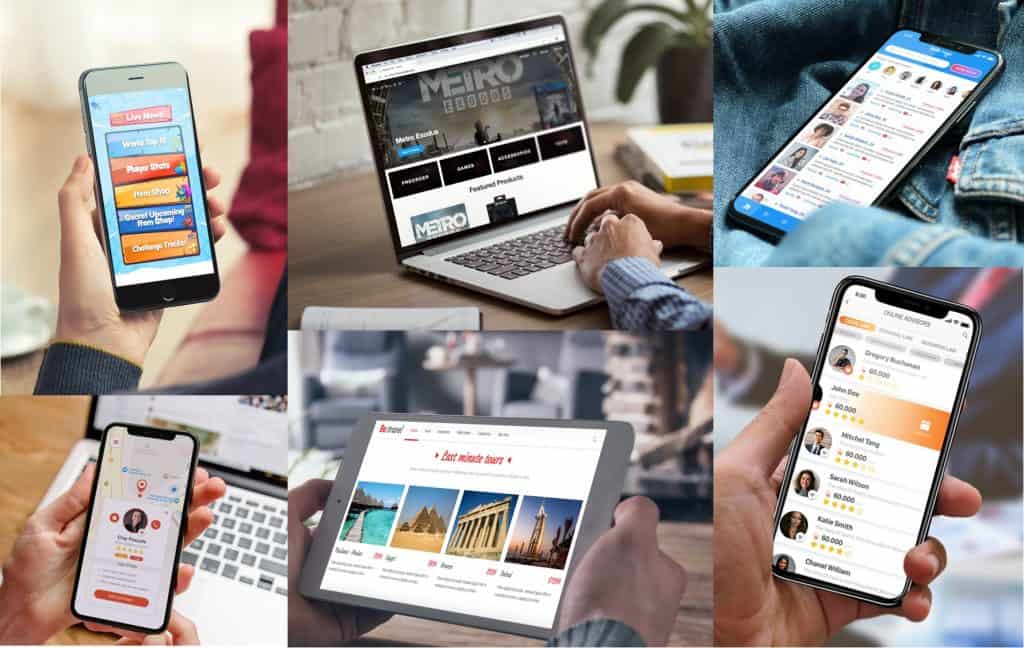
Developing an app
Why do Custom Mobile Apps become trendy today?
Custom mobile apps are gaining momentum — as per the reports, on average, about 7.5 hours per employee per week are saved by using a customized mobile application, and 82% of the business owners believe that it helped them earn additional business revenues.
These apps are altered to address particular users rather than providing a solution for a large group with varying requirements. This is the primary reason custom apps development is gaining traction and proving to be an attractive option for businesses.
Recent data shows mobile drives 34% of all E-commerce sales, and every business owner is applying custom mobile applications for their business. Companies keep coming up with new mobile strategies to push maximum profit.
57% of the companies are now delivering a customized experience to their customers. However, only 24% are providing it through their mobile applications.
⇒ Read more: Top 20 Mobile App Development Trends for 2022
4 Reasons you need Custom App Development for your enterprise
Developing an app is not an easy game. You need something unique to stand out from the competitors. It requires highly engaging, reflects your business personality, connects well with the target audience, and provides you with the branding solution you are looking for. This is where custom app development (not generic) will appear as the best solution for your need.
Your mobile app should be designed and developed for your business. It should relate to your need for scalable growth, target your specific market and audiences and reflect on your business ideology. There are some key reasons why you need to invest in custom apps development for your business:
1. Personalized Experience
You would want your users to get the best-personalized experience as much as possible. The only way to do it is to leverage the benefits of a custom mobile application. Features are integrated as per the target audience, and the elements are created to fit the particular users’ needs. Therefore, the result is enhanced and aimed at the design to ensure users get a better experience.
2. Integration with Your Business Model
Your business model would have certain specific characteristics and modalities, which would require certain processes to merge well. This is what a custom mobile application will provide you. It will have features and functionalities adjusted and well-incorporated with your existing system to enhance the overall process and capabilities.
3. Scalability
As your business grows and expands, the related products also need to be developed. This is something a generic app won’t be able to cater to. A custom app would be scalable in functions and capabilities, which could be easily upgraded seamlessly with your business model.
4. Effective Project Management
A custom app would be able to provide you with accessibility to all the enterprise information at any time and within a secured and shared access point between the authorized people. It could be easily synchronized with other devices, allowing real-time project management to enhance coordination and efficient work processes.
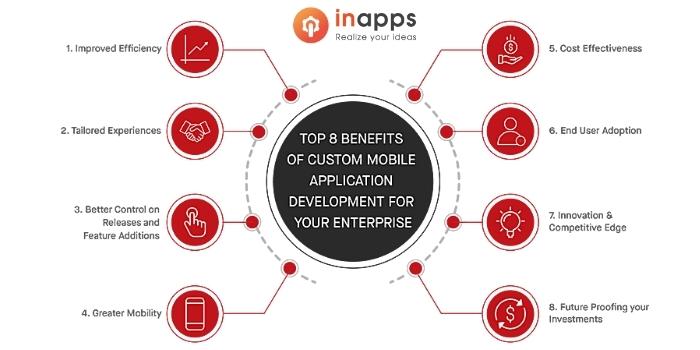
Offshore cross-platform app making service
How to start developing an app – 7 steps
Custom app development can take many different paths because it is tailored to the client’s needs and requirements. Some businesses come to us with a ready-made MVP and all the specifics listed; others have only a general idea of what they want in the end. The process is heavily influenced by the project, the software, the details, and the client.
The stages are listed below can be changed in various ways. However, if you only have an idea for the final product, your plan will look like this when developing an app.
1. Brainstorming
This step should be completed before approaching a custom app development company. If you are an investor looking for a new opportunity, brainstorming would be an excellent place to start. Consider the issues in your country, region, or company and how an app can help solve them.
For example:
- Uber co-founders Travis Kalanick and Garrett Camp couldn’t find a taxi on a snowy night in Paris and wondered, “What if you could request a ride simply by tapping your phone?”
- Luis von Ahn, the founder and current CTO of Duolingo, believed that free education could change the world and devised a plan for an app that would teach people foreign languages.
- Airbnb’s founders were looking for a way to make a few extra dollars when they came up with the idea, which grew into a $31 billion company. These concepts appear prominent today because the services can improve many people’s lives. Before contacting a custom application development company, consider such facilitation or issue for your idea.
2. Determine the target audience
Once you’ve identified a problem, you must determine who will benefit from your solution. The examples provided above are pretty universal. However, Uber caters to users aged 18 to 60. In contrast, Airbnb caters to students and low/middle-income travelers, and Duolingo caters to people who lack funds but have a strong desire to learn a foreign language. Of course, these are pretty hazy descriptions of an application’s target audience, but they are an excellent starting point for your marketing research.
Consider the ideal user for your future app:
- Who exactly are they? (For example, gender, age, location, occupation, income, etc.)
- How frequently do you anticipate them using the application?
- What distinguishes your app in the market?
The simplest way to gather this information is to ask people around you. Set up online polls to find out what your target audience prefers. Remember to collect their info to create your target user profile.
3. Strategy planning
Once the user and the problem are complete, you must carefully plan how your custom development solutions will generate revenue. The strategy you choose for the new project will also impact customer satisfaction and the speed with which your goal will be met.
First, answer the following questions:
- How will you reach out to end-users? How will they find out about the app?
- What is the price of acquiring one user?
- How much money is required to gain market traction?
And, yes, you may believe that these answers can be saved for later once your custom web development project is completed. However, the sooner you start marketing, the sooner you will start making money after the app is released.
Furthermore, the business strategy influences whether the app requires deep linking, ad slots, SEO optimization (to make the app searchable in Google or App/Google Play Stores), etc. These elements are also beneficial to the application’s technical side.
Consider how the future app will be distributed when developing a business strategy: to individuals via stores or organizations that will acquire it for in-house use. In-house custom mobile app development generally necessitates less marketing-related development. However, more work is required to make it compatible with the client’s internal systems and the remaining apps.
The widespread public availability necessitates additional creation on app optimization and adaptability to a wide range of end-user devices.
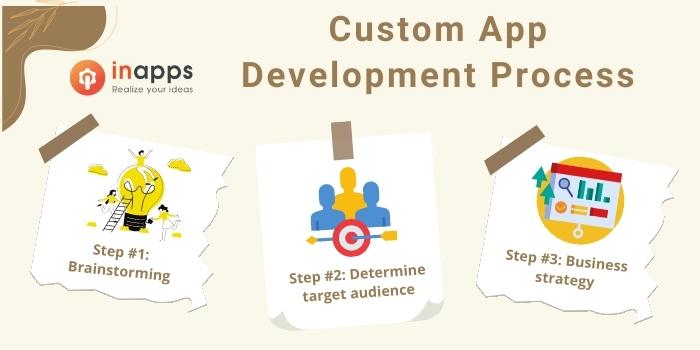
Successful apps process
4. Specifications
Even if you are not a techie and cannot define the specifications in IT terms, creating them is an important step. The overall functional and technical specifications and your expectations for future software will assist website and mobile app developers in understanding your vision and creating the exact solution you require. Here’s what will come in handy:
Define user roles: consider who will use the app, such as teachers and students, self-learners, registered/unregistered users, returning or new customers, etc. The overall concept of your app heavily influences the roles.
- Consider how each defined role will use your app or how you want them to use it. The simplest method is a flow chart with arrows and specific app elements.
- Plan the app: This includes only high-level considerations such as the expected number of screens and their names, buttons, and functional design.
- Create a feature list that includes what you want the app to do and how it will do it. Plan any integrations (for example, banking systems or YouTube), app analytics to inform future marketing efforts, and monetization methods (in-app purchases, ads, pay-per-download, etc.)
There are no right or wrong answers at the planning stage. The more information you can gather and define for the custom application development company, the faster and easier the final result will be.
5. Finding a custom app development company
With an idea, technical specifications, a marketing strategy, and a business plan, the time has come to find a trustworthy partner to develop an app.
- Start your search by browsing listing websites such as Clutch, GoodFirms. You can find a custom app development company in your area or a specific set of services using the filters.
- Examine the portfolio: look through the websites of selected teams to see if they have ever worked with applications similar to yours. Choose companies that have previously worked in your segment because they can provide more insight into market needs and trends.
- Read the blog: A blog is a great way to get to know the team before meeting them. You can read the articles to learn about the company’s focus and consider their knowledge base a sign of experience.
- Check the firm’s market presence: market presence would include the firm’s participation in any conferences or awards received. Review if any of their apps are popular and how their social media strategy works.
- Check for customer feedback or referrals from reliable sources: it is much easier to work with a company that has received positive feedback or referrals from people you know. However, consider opinions from the online world when comparing feedback.
- Focus on data and technology security: this can only be assessed during direct contact with the chosen company. Find a team that can define their security strategy for you right away, as this will provide you with clarity on their approach.
- Focus on delivery time: be prepared for delays in software development. However, you should discuss the timeline and delivery time you expect the chosen custom application development company to adhere to. Scrupulous time management is a good sign (you can judge this by how they arrive for your first meeting/e-meeting).
- You’ve already decided to outsource because you’re reading this article, so the question is whether to use an offshore or onshore team. Offshore companies in Asia and Eastern Europe typically charge less while providing comparable and often higher support and expertise. Onshore teams would be more expensive, but they would be in the same time zone, making communication easier.
- While there is a distinction between offshore and onshore, the former points are more valuable. Only proceed to this distinction if the preceding ones fail to establish the reputation.
- Sign a contract: The only document that can help you in the event of a dispute is a contract that includes all details, deadlines, technical specifications, and so on. Always read the papers before signing them to protect your company from any unfortunate incidents.
6. Pre-development
This stage is referred to as pre-development because, before custom app development can begin, the outsourced company and your team must meet and define all project details. The latter can include anything from your drafts and ideas to their app presentation, from pencil-and-paper concepts to designer images and UX journeys. Negotiation is one of the most important aspects of custom software development because it defines the entire project.
Before getting down to business, a development team will usually create a rapid prototype for your approval.
Create a rapid prototype
Please do not conflate a prototype and an MVP because they are two distinct stages. A prototype is a piece of the app that contains clickable elements; it is an excellent way for you to understand how the app will function and feel once it is released. However, some website and mobile app developers would refuse to do a free prototype because it still requires time and effort.
In this case, you will most likely receive some design drafts and user journeys in the form of images to help you understand the upcoming working prototype. This section should be sufficient to determine which team works best for your values and who has a clearer vision for your future app to begin working together.
Create an MVP
A minimum viable product is referred to as an MVP. This is a scaled-down version of your fully developed application, with only the features required to be released and used by early or test customers. This stage is still considered pre-development because early tests may reveal that your initial app concept requires significant changes. It could result in a substantial change in the development director or even the complete abandonment of the idea.
MVPs verify to see if you’re providing an engaging experience for your customers. Plan a trial run with your chosen custom mobile app development team and see what feedback you can gather. For an internal app, ask several employees to begin working on the new tool to assess its benefits and drawbacks.
Go to websites like UserTesting or Userbrain and ask people to use your app for mass apps, those that are available to anyone through a Google Play/App Store. Consider how many interested users respond and what they have to say, pay attention to demographics and analytics, and adjust your target audience and approach.
7. Development
Given that an MVP may be a huge success or receive only positive feedback, the design stage described below may not be necessary. However, after the MVP, many custom web development companies polish or even re-brand the application to give it a twitch of novelty and stir up the product’s full-scale release. The decision would be based on the end-users budget, timeline, and preferences. In any case, traditional custom website and mobile app developers would work within the framework outlined below.
Design
Here’s a quote from Steve Jobs that should be mentioned: “Design is not just what it looks and feels like.” “How it works is through design.” You already have an MVP that meets most of your users’ needs. At this point, please don’t reinvent the wheel; instead, consider incorporating feedback about your app’s usability, incorporating new design trends to refresh it, experimenting with small animations for button and page crossovers, and so on. Make small but noticeable changes.
Development
Development is how the magic of coding transforms an idea into a working application. Most of the time, you won’t need to know much about coding, development techniques, programming languages, specific frameworks, etc. All of this will be handled by the custom application development company. At this point, a client should do two things: decide on the app handover and control the process.
The former implies that you must plan ahead of time how you will take over the app once development is completed and the location of app storage (your servers or the cloud). This decision will impact the upcoming development, so make sure you discuss it with the developers.
The latter entails meeting with the development team regularly to track progress. Depending on the development sprints and prior agreement, these meetings would typically occur weekly or monthly. At such checkpoints, ensure that the team is on track with the development timeline; there should be no major roadblocks, and they should have no further questions for you as the client.
Testing
Testing is an essential component of any development. Some testers detect significant problems with the app’s performance or functionality and can notify the development team before the solution is released to the public.
Testing can be carried out by the same custom application development company responsible for the core function or by an external team of QA specialists. The option would be discussed at the time of contract signing. Testers are typically present at all stages of development to reduce the negative impact that bugs and app discrepancies have on an end-user.
Training
This is a crucial step. Your team should understand how to use the application before it is launched and made available to end-users. It is essential for custom apps designed for internal use. Internal employees who will have direct contact with the application should understand how it works, test it, and participate in a Q&A session.
When developing an app for end-users, training entails passing knowledge from the outsourced development team to the in-house experts. Once the app is released, and end-users have access to its content, your IT department must understand how to manage, monitor, and control it.
Launch
Once all of the details are worked out, and you are satisfied with the software, it goes live and is available in all stores.
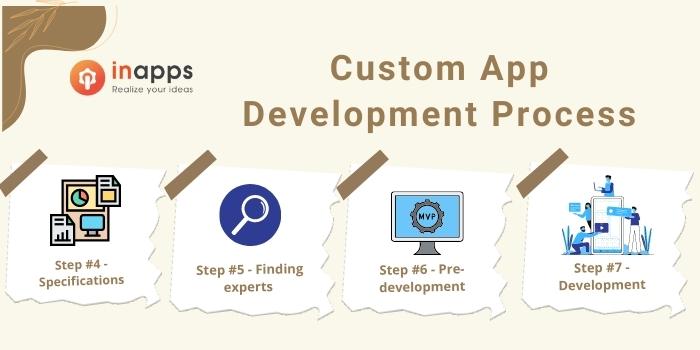
Successful apps process
How long does it take to build Custom Apps?
Given that you will adhere to best practices and continuously improve your application, the answer is that it will never end. But you’re probably looking for a more specific solution: when the application is launched and begins to generate revenue. This process can take anywhere from four to nine months, depending on various factors.
Here is how long every stage may take:
| Phrase | Time |
| Planning and requirements | 2-4 weeks |
| Design and architecture | 2 weeks |
| Development | 3-8 months |
| Implementation | 2-4 weeks |
| Tests and maintenance | 3-6 weeks |
| Production | 3+ weeks |
The actual timeline for custom mobile application development is heavily dependent on the scope of your project. A simple time-tracking app can be completed in three months, whereas an extensive app for online shopping would only take 9-12 months to develop. The following are some of the factors that influence the complexity and length of your app’s delivery time.
Wrapping Up
Custom app development will provide you with increased productivity, high-end security, customer approach with engagement, and improved ROI. Therefore, it becomes a great asset for your end-to-end growth requirement.
InApps Technology can help you conceptualize your plan to step into the mobile world, crafting and creating a custom-tailored mobile app that is robust, secured, result-oriented, and specific to your brand’s growth.
We, at InApps Technology, understand the intricacies of native and cross-platform app development for businesses and individuals. We have been providing customized mobile apps to global clients in popular Android, iOS, and Windows platforms.
If you have any kind of custom mobile app development requirement for your business, feel free to Fill in the CONTACT FORM or talk to one of our representatives.
Let’s get your app idea journey start!
Let’s create the next big thing together!
Coming together is a beginning. Keeping together is progress. Working together is success.





